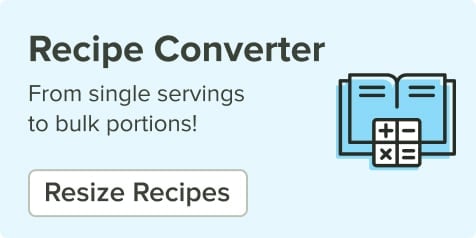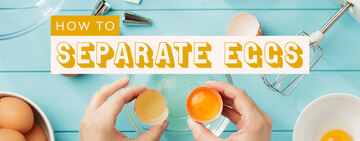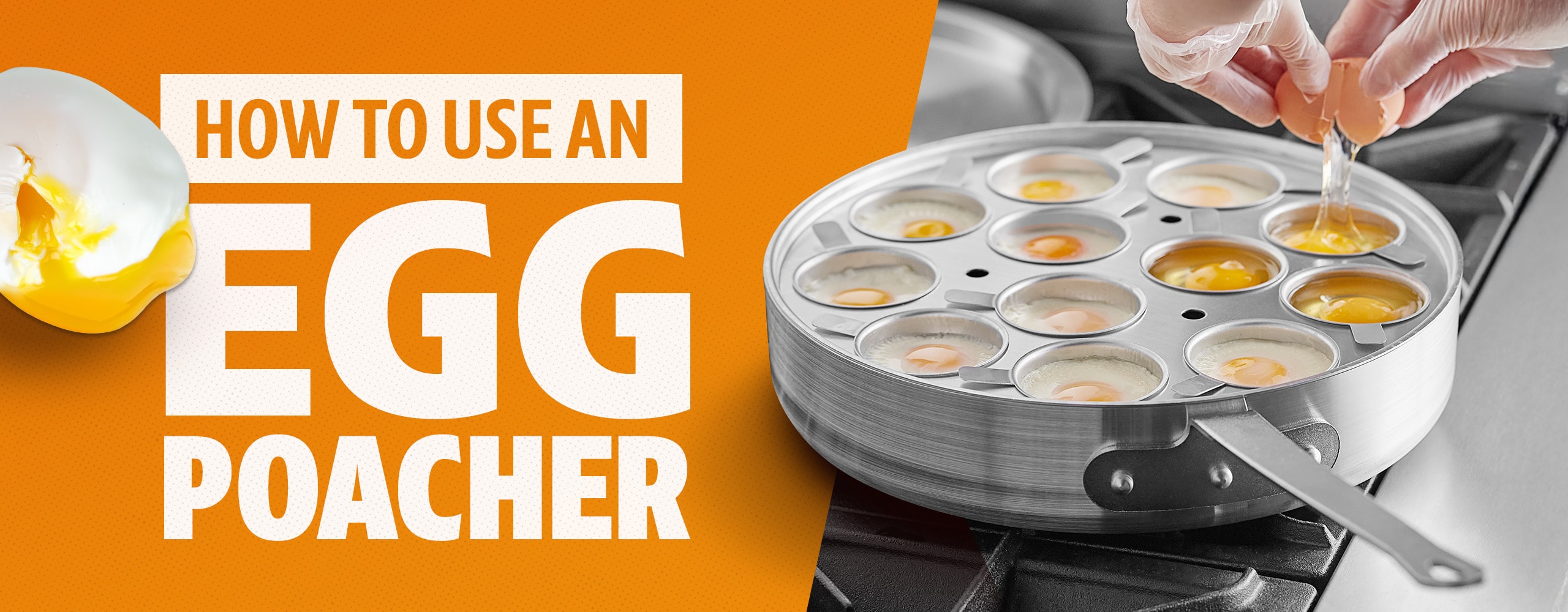
Poached eggs are a cornerstone of any well-rounded brunch menu. From classic eggs Benedict to more inventive creations, they offer an elegant simplicity that today’s breakfast and brunch diners crave. But consistently producing perfect poached eggs during a busy service? That can be a challenge unless you’re using the right tools. Egg poachers streamline the process, reduce prep time, and ensure reliable results, making them a smart addition to any professional kitchen.
Shop All Egg PoachersWhat Is an Egg Poacher?
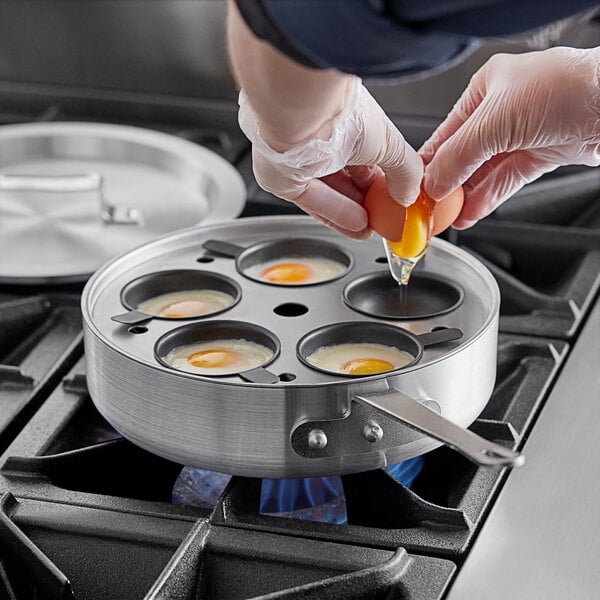
An egg poacher is a specialty piece of cookware designed to take the guesswork out of making poached eggs. An egg poacher typically includes four components: a shallow saute pan, a fitted insert, individual poaching cups, and a lid. You can purchase a complete egg poacher set or buy the insert and cups separately to use with a compatible pan you already have in your kitchen. The cups hold individual eggs above simmering water, allowing them to cook evenly using gentle steam.
For restaurants, diners, and brunch-focused cafes, an egg poacher isn’t just convenient, it’s essential. It allows your kitchen to produce high-quality poached eggs consistently, even during peak hours. Because the process is so straightforward, any line cook can be trained to use it efficiently, freeing up your more experienced staff for other tasks.
How to Poach an Egg in a Poacher
Using an egg poacher pan is an efficient method for producing consistently high-quality poached eggs. Whether you're training new staff or streamlining brunch service, mastering this tool will ensure your eggs are perfectly cooked every time. Follow our egg poacher instructions below to see just how simple and reliable the process can be.
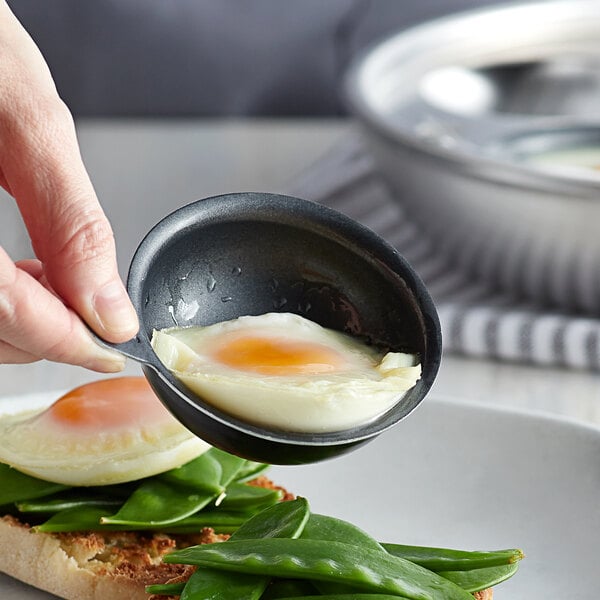
- Assemble the poacher: Start by placing the metal insert (with individual cups) into the base pan. Ensure everything is clean and assembled correctly.
- Add water to the pan: Pour in 1 to 1 1/2 inches of water. The water level should be below the bottoms of the poaching cups. This allows the eggs to steam rather than boil.
- Preheat the water: Place the pan over medium heat and cover with the lid. Allow the water to reach a gentle simmer. Avoid a full boil, which can lead to overcooked or tough eggs.
- Prepare the poaching cups: While the water is preheating, lightly grease each cup with non-stick spray or a small amount of butter to ensure easy release. This also helps preserve the shape and texture of the eggs.
- Crack the eggs: Crack each egg directly into a prepared poaching cup, or for greater control and consistency, especially when cooking a large batch, crack each egg into an individual ramekin or small bowl first, then gently pour it into one of the cups. The latter method can help ensure a more even cook time across all eggs.
- Poach the eggs: Place the lid back on the pan and allow the eggs to cook for 2 to 4 minutes, depending on your desired doneness.
- Remove and serve: Once the eggs are cooked, turn off the heat and remove the pan from the burner. Using an oven mitt or heat-resistant glove, carefully lift each poaching cup out of the pan. In most cases, the egg will release easily on its own. However, if needed, gently run a small spatula or spoon around the edge to help guide it onto the dish.
Egg Poacher FAQs
Below are answers to some of the most frequently asked questions about egg poacher pans, covering everything from cook times to water levels.
How Long Do You Poach an Egg in a Poacher Pan?
Poaching typically takes between 2 to 4 minutes, depending on how soft or firm you want the yolk. For a classic brunch-style poached egg with a runny center and fully set white, aim for around 3 minutes.
How Much Water Do You Put in an Egg Poacher Pan?
Fill the base of the pan with 1 to 1 1/2 inches of water, ensuring the water does not touch the bottoms of the poaching cups. This allows the eggs to steam evenly without being submerged.
Why Does the Cooked Egg Look Different in the Egg Poacher?
When you use an egg poacher instead of the traditional method of poaching in simmering water, the egg is cooked by gentle steam rather than being fully submerged. This results in a more compact, uniform, and rounded shape, with a firmer, more evenly set white. Because the egg white settles at the bottom and the yolk stays on top, the final appearance is a bit different from a traditionally poached egg. For a more classic look, especially when serving on something like avocado toast, try flipping the egg upside down before plating.
Can You Make Multiple Eggs at Once?
Yes, commercial egg poacher pans are designed to handle the breakfast rush, ranging in size from 4 to 15 cups, to poach multiple eggs at the same time.
Do You Need to Grease the Poaching Cups?
It depends on the material and quality of the egg cups. Poaching cups typically come in either non-stick or stainless steel finishes. While some high-quality non-stick coatings may allow you to skip greasing altogether, others still benefit from a light coating to prevent sticking. For stainless steel cups, it’s always recommended to lightly grease them with non-stick spray or butter to ensure easy release and maintain the shape of the eggs.
Easy Poached Eggs
Our video demonstrates how using an egg poacher makes the process of poaching eggs significantly faster and easier than traditional stovetop methods.
For any restaurant or diner looking to streamline breakfast service, an egg poacher pan is a must-have tool. It eliminates the uncertainty of traditional poaching methods and empowers even junior kitchen staff to produce consistent, beautifully poached eggs every time. Whether you’re serving eggs Benedict or crafting your own signature dish, this tool ensures speed, simplicity, and quality.

